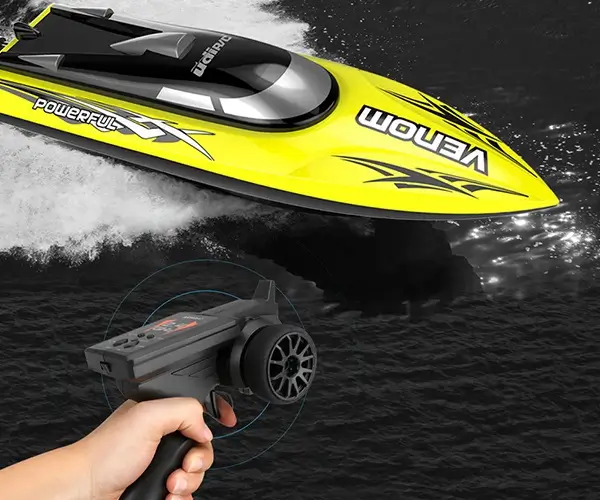Unlocking Precision and Power: The World of Servo Drivers and Motors
In the bustling realm of modern automation and robotics, few components are as vital or as transformative as servo motors paired with their dedicated servo drivers. They are the silent, powerful maestros behind the seamless movement of robotic arms, CNC machines, conveyor belts, and countless other high-precision equipment. Understanding the nuances of these technologies reveals not just their complex engineering but also their pivotal role in pushing the boundaries of what machines can accomplish.

An Introduction to Servo Motors: The Heartbeat of Precision
At their core, servo motors are electric actuators designed to deliver precise rotational or linear movement. Unlike basic motors, which run at a constant speed regardless of resistance, servo motors are engineered for accuracy, control, and stability. They are commonly small but mighty, capable of converting electrical signals into finely-tuned mechanical motion.
The magic lies in their internal components—mainly the rotor, stator, and sometimes electronic encoders. The rotor, often equipped with permanent magnets, is the part that spins or moves linearly, driven by electromagnetic forces orchestrated by the stator windings. Meanwhile, encoders track the position or speed of the motor shaft, feeding back real-time data that allows for responsive adjustments.
The applications are as diverse as they are critical: from aerospace to dentistry, from precision 3D printers to automotive manufacturing. Each demands a motor capable of delivering not just raw power but the finesse to execute complex, exact movements in milliseconds. That’s where the servo motor’s clever design and control come into play, making them the ideal choice for high-precision tasks.
The Role of Servo Drivers: The Control Center
While the motor is the performer, the servo driver is the conductor—an intelligent device that coordinates all aspects of motion. The servo driver receives commands from a control system, like a PLC or a computer, and translates them into electrical signals that guide the servo motor’s action. Think of the driver as the brain that interprets instructions, manages power flow, and maintains smooth operation.
Servo drivers are equipped with sophisticated circuitry that regulate current and voltage, ensuring that the motor responds swiftly and accurately. They also incorporate feedback mechanisms—like pulse encoders or resolvers—that constantly monitor the motor's position, velocity, and torque. Using this data, the driver adjusts its output in real-time, maintaining high fidelity and avoiding overshoot, oscillations, or jitter.
This real-time feedback loop is what enables servo systems to achieve high dynamic performance. Whether it’s a robotic arm performing intricate assembly or a camera pan adjusting with pinpoint accuracy, the interplay of the servo driver and motor ensures that movements are fluid, precise, and repeatable.
Synergy of Technology: Why They Go Hand-in-Hand
The combination of a servo driver and motor is a classic example of synergistic technology—each component optimized to complement the other. The motor supplies the mechanical power, but without the driver’s intelligent control, its potential remains unfulfilled. Conversely, a robust driver without a capable motor would be pointless.
Modern servo systems often feature digital interfaces, advanced algorithms, and extensive programmability. They can handle complex motion profiles, coordinate multiple axes, and adapt on the fly to changing loads or environmental conditions. The results are machines that operate with higher efficiency, lower energy consumption, and improved longevity.
A significant advantage of this pairing is scalability. Whether it’s a tiny servo motor for a medical device or a large industrial actuator handling heavy loads, the same fundamental principles apply. Engineers can customize the combination for specific applications, balancing factors like speed, torque, size, and power consumption.
The Evolution of Servo Technology
Over the past few decades, servo technology has undergone remarkable advancements. Early systems were often bulky, analog, and limited in their capabilities. Today, integrated digital controllers, Ethernet connectivity, and AI-driven algorithms have revolutionized how servo systems operate.
The development of brushless servo motors, for example, has dramatically improved reliability and efficiency. Their lack of brushes reduces wear and maintenance, while their high power-to-weight ratio enables lighter, faster machines. Meanwhile, the evolution of servo drivers has included self-tuning features that adapt to changing conditions, diagnostics tools that predict failures before they happen, and energy-saving modes that reduce operational costs.
Advances in materials—such as high-strength magnets, innovative insulation, and compact circuit boards—have also contributed to smaller yet more powerful systems. These improvements are not just technical achievements but strategic advantages for industries seeking to manufacture smarter, faster, and more environmentally friendly products.
The Future Is Precision: Next-Generation Servo Systems
Looking ahead, the trajectory of servo technology points toward even greater integration with digital ecosystems. Industry 4.0 concepts, AI, and machine learning are making servo systems smarter, allowing for self-optimization and predictive maintenance. These innovations promise increased uptime, reduced downtime, and more adaptable manufacturing lines.
Furthermore, hybrid servo systems, combining the strengths of different motor types or employing new control architectures, are being explored to meet the unique challenges of emerging applications like autonomous vehicles and soft robotics.
In essence, the world of servo drivers and motors is a blend of art and science—one that balances electromagnetic theory, electronic control, mechanical design, and software innovation. Together, they are shaping a future where machines move with unprecedented grace, speed, and accuracy.
Kpower has delivered professional drive system solutions to over 500 enterprise clients globally with products covering various fields such as Smart Home Systems, Automatic Electronics, Robotics, Precision Agriculture, Drones, and Industrial Automation.




































